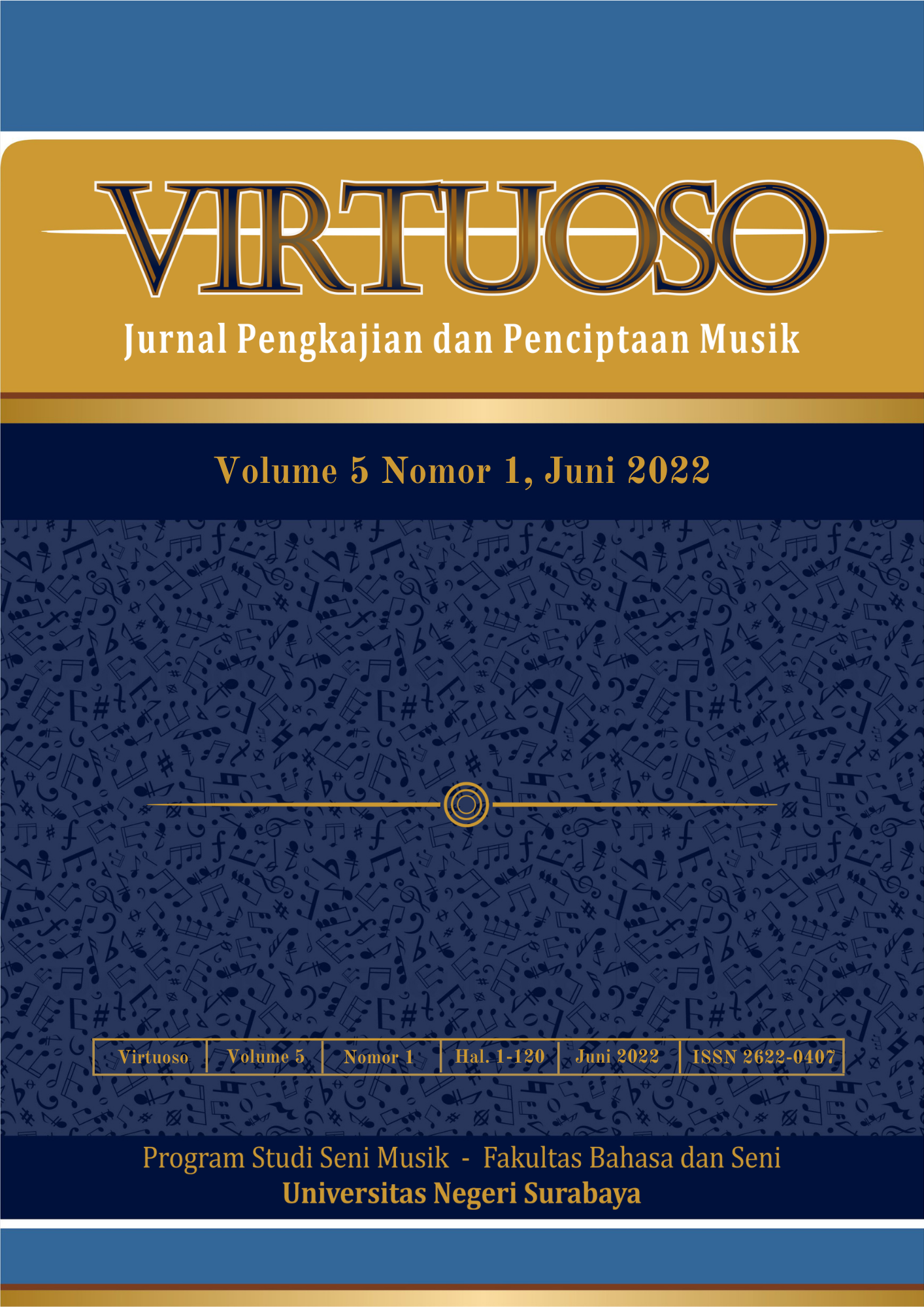Music Composition “Kala Senja” (Melody Variation Overview)
Main Article Content
Abstract
Downloads
Article Details

This work is licensed under a Creative Commons Attribution-NonCommercial-ShareAlike 4.0 International License.
The copyright of the received article once accepted for publication shall be assigned to the journal as the publisher of the journal. The intended copyright includes the right to publish the article in various forms (including reprints). The journal maintains the publishing rights to the published articles.
References
Arisasangka K. Inung. 2001. Kamus Skala Melodi. Jakarta: PT. Bhuana Ilmu Populer.
Bandem, Murgiyanto. 1996. Teater daerah Indonesia. Bali: Kanisius.
Banoe, Pono. 2003. Kamus Musik. Yogyakarta: Kanisius.
Banoe, Pono. 2003. Pengantar Pengetahuan Harmoni. Yogyakarta: Kanisius.
Christakis, Zimmerman, DiGiuseppe, &McCarty. 2004.
Kawakami, Genichi, 1975. Arranging Popular Musik. Tokyo: Yamaha Music Foundation
NAEYC (National Associantion for The Education of Young Children, 1997)
Prier, Karl-Edmund. 1996. Ilmu Bentuk Musik, Yogyakarta: Pusat Musik Liturgi
Prier, Karl-Edmund. 2009. Kamus Musik. Yogyakarta: Pusat Musik Liturgi
Prier, Karl-Edmund. 2011. Kamus Musik. Yogyakarta: Pusat Musik Liturgi
Sujiono N.Y. 2013. Konsep Dasar Pendidikan Anak Usia Dini. Jakarta: PT Indeks.

